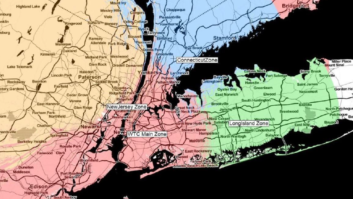MADISON — Thousands of miles of buried fiberoptic cable in densely populated coastal regions of the United States may soon be inundated by rising seas, according to a new study by researchers at the University of Wisconsin–Madison and the University of Oregon, reports news.wisc.edu.
The study, presented July 16 at a meeting of internet network researchers, discusses “critical communications infrastructure that could be submerged by rising seas in as soon as 15 years,” according to the study’s senior author, Paul Barford, a UW–Madison professor of computer science.
Buried fiber optic cables are designed to be water-resistant, but unlike the marine cables that ferry data from continent to continent under the ocean, they are not waterproof.
Risks to the physical internet, says Barford, are associated with large population centers that exist on the coasts, the same places where the transoceanic marine cables that underpin global communication networks come ashore. “The landing points are all going to be underwater in a short period of time,” he notes. “Many of the conduits at risk are already close to sea level and only a slight rise in ocean levels due to melting polar ice and thermal expansion as climate warms will be needed to expose buried fiber optic cables to sea water,” said Barford. “Hints of the problems to come can be seen in the catastrophic storm surges and flooding that accompanied hurricanes Sandy and Katrina,” quoted from the same article.
The study was conducted by Ramakrishnan Durairajan, now of the University of Oregon, and Carol Barford, director of UW–Madison’s Center for Sustainability and the Global Environment. The study suggests that by the year 2033 more than 4,000 miles of buried fiber optic conduit will be underwater and more than 1,100 traffic hubs will be surrounded by water. The most susceptible U.S. cities, according to the same article, are New York, Miami and Seattle, but the effects would not be confined to those areas.












